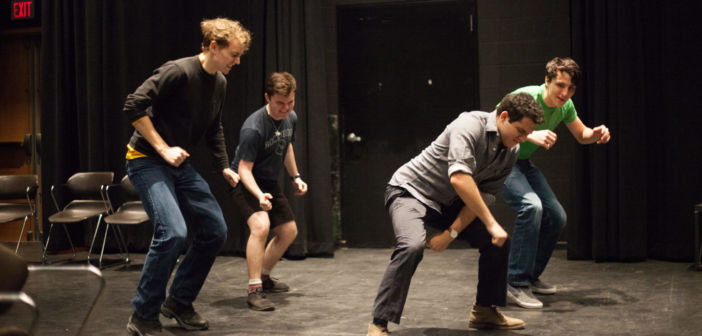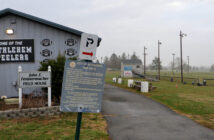The student production of “Spring Awakening” ran for seven nights last week at Zoellner Arts Center after months of preparation.
“Spring Awakening,” written by Steven Sater with music by Duncan Sheik, chronicles a coming-of-age story of a group of school-aged children living in 19th-century Germany. The musical utilizes a rock and roll music score unlike those found in traditional Broadway musicals, highlighting the unorthodox aspects of the production.
The musical follows the main characters Wendla Bergmann, Moritz Stiefel, Melchior Gabor, Hanschen Rilow and Ernst Robel as they navigate their ever-changing lives.
The characters encounter obstacles throughout their journey that are especially relevant in modern life. Confronting provocative dreams, Moritz questions Melchior on the “nightmares” he has been having, prompting Melchior to write a detailed essay for Moritz on what he is experiencing.
Following the death of Mortiz, the characters all come together as his failure in school contributes to his suicide. The play also portrays issues such as domestic abuse, homosexuality and abortions.
Bill Whitney, director of “Spring Awakening,” said there was a certain beauty and necessity in the darkness the show brings.
“Musicals are designed to take people away from life, but this one is not,” Whitney said.
Whitney said while the musical was not on the short list of musicals he wanted to produce during his career, he was very thankful to have this opportunity. The show has become one of his new favorites because of the heavy topics dealt with by the characters and the relevance it had to the audience.
The production showcased the talents of the students involved through demonstrations of both their singing and acting capabilities.
“The music was amazing because of the voices coming together,” said Christianna Pepingco, ’20, after seeing the show.
The show made use of dynamic lighting, using a geometric rectangular design as a backdrop, illuminating the stage with different colors to complement each musical number. Likewise, sections of the stage were strategically illuminated by overhead lights to create the illusion of objects on the ground.
With many students involved in the production of the show, the audience was filled with fellow students there to show support.
“Seeing people I know perform was my favorite part,” said Jack Temple, ‘19.
Whitney said he made a conscious effort to involve many students in the show including in the cast, the pit orchestra and the crew.
The cast and crew have been working since February to progress the show to the point of performance.
They started with music rehearsals where the cast perfected their pitch and tone before transitioning to choreography rehearsals. Later they moved to the staging, which was designed to incorporate the learned vocal and choreographic aspects of the show together. Following spring break, the cast and crew shifted gear as they began perfecting and polishing the show to achieve perfection before opening night.
While Whitney said the progress of the show went well and as expected, he acknowledged that it was not without obstacles. He said his original staging concept incorporated the use of an elevator lift, but as the show neared, the lift was not working as they thought it would which forced him to abandon the concept and begin restaging.






Comment policy
Comments posted to The Brown and White website are reviewed by a moderator before being approved. Incendiary speech or harassing language, including comments targeted at individuals, may be deemed unacceptable and not published. Spam and other soliciting will also be declined.
The Brown and White also reserves the right to not publish entirely anonymous comments.